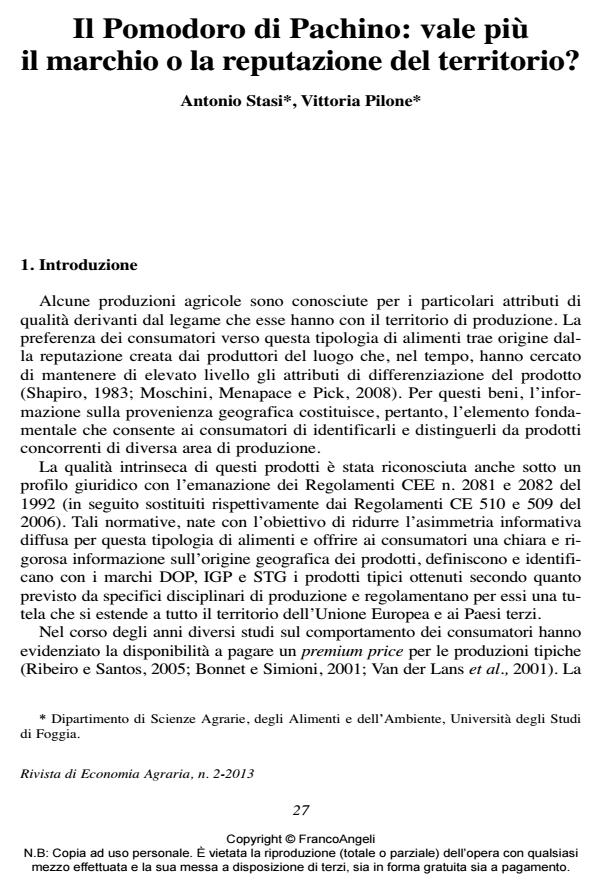Il Pomodoro di Pachino: vale più il marchio o la reputazione del territorio?
Titolo Rivista RIVISTA DI ECONOMIA AGRARIA
Autori/Curatori Antonio Stasi, Vittoria Pilone
Anno di pubblicazione 2014 Fascicolo 2013/2
Lingua Italiano Numero pagine 16 P. 27-42 Dimensione file 705 KB
DOI 10.3280/REA2013-002002
Il DOI è il codice a barre della proprietà intellettuale: per saperne di più
clicca qui
Qui sotto puoi vedere in anteprima la prima pagina di questo articolo.
Se questo articolo ti interessa, lo puoi acquistare (e scaricare in formato pdf) seguendo le facili indicazioni per acquistare il download credit. Acquista Download Credits per scaricare questo Articolo in formato PDF

FrancoAngeli è membro della Publishers International Linking Association, Inc (PILA)associazione indipendente e non profit per facilitare (attraverso i servizi tecnologici implementati da CrossRef.org) l’accesso degli studiosi ai contenuti digitali nelle pubblicazioni professionali e scientifiche
Geographical Indications certify the link between quality of some agro-food productions and their territory. For these products the premium price is derived from both certification and reputational effect of the territory, since there are products without Geographical Indication that have a rent associated with the area of production. With the case study proposed in this paper the separate effect of these two factors is measured. The analysis is focused on "tomato from Pachino" with brand of protected geographical indication (PGI). The survey is conducted over a random sample of 700 consumers living in Italy. Results shows that consumers pay a higher price for "tomato from Pachino PGI" than price paid for product with only indication of area of production. Neverthelerss, a lack of knowledge about the meaning of PGI brand is observed. The analysis is completed by segmenting the market, allowing the identification of consumers more likely to buy certified product.
Parole chiave:Marchio di tipicità, choice model, pomodoro di Pachino, comportamento dei consumatori
Jel codes: Q13, Q18, L15
Antonio Stasi, Vittoria Pilone, Il Pomodoro di Pachino: vale più il marchio o la reputazione del territorio? in "RIVISTA DI ECONOMIA AGRARIA" 2/2013, pp 27-42, DOI: 10.3280/REA2013-002002